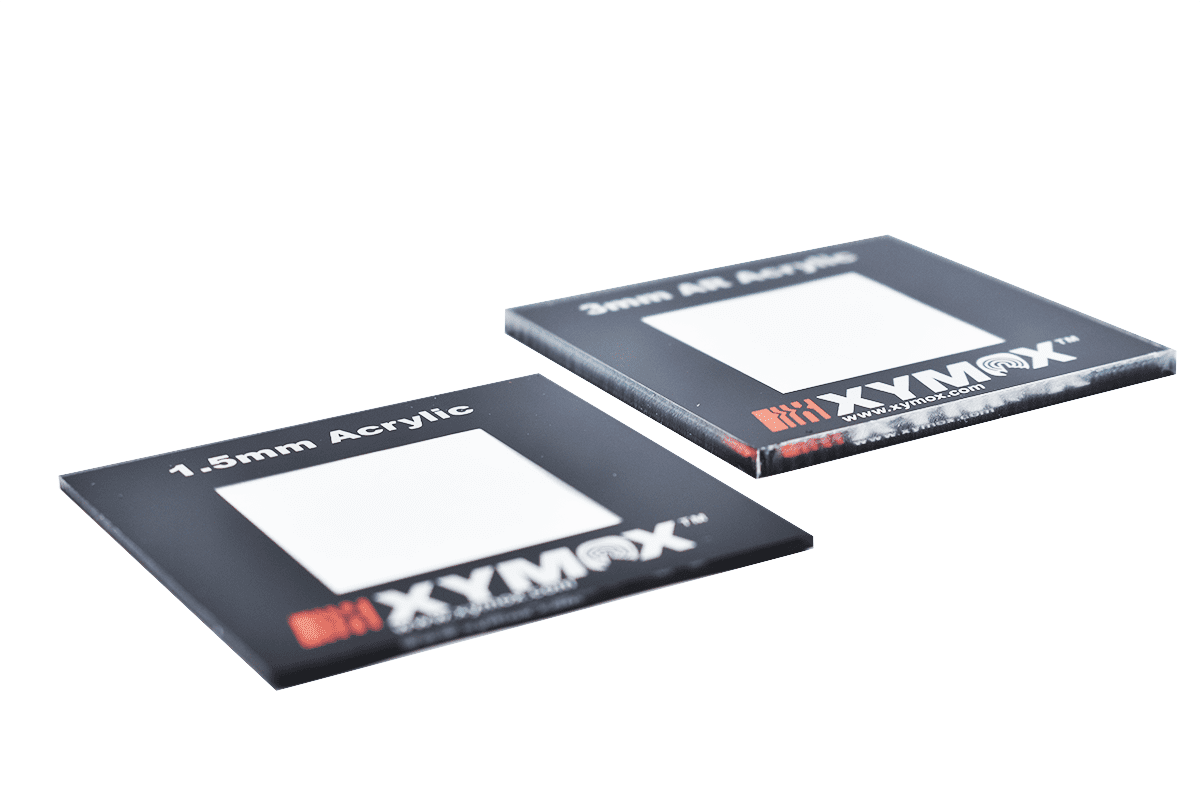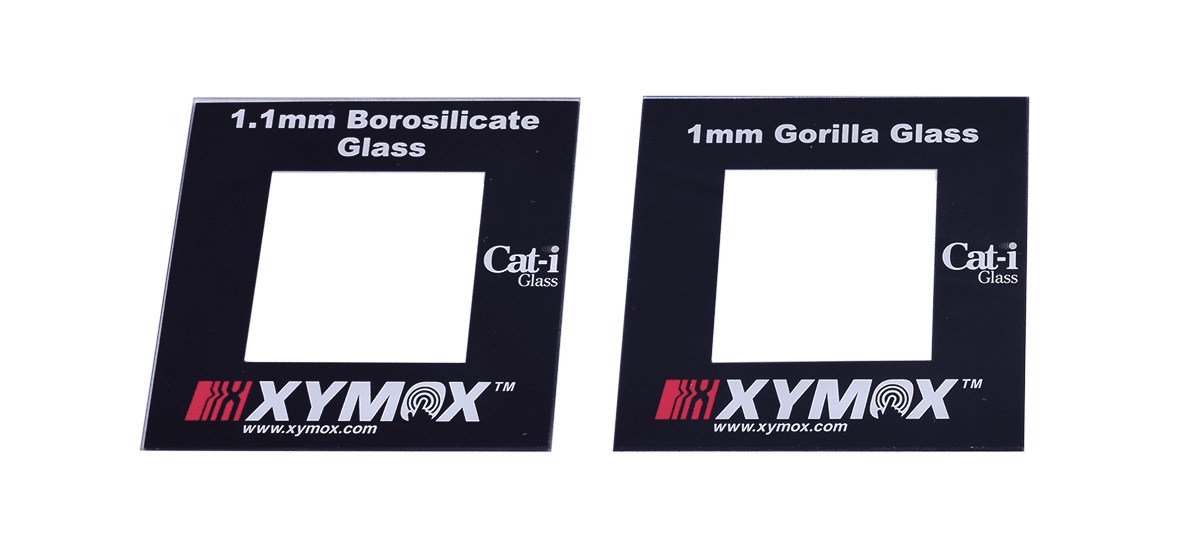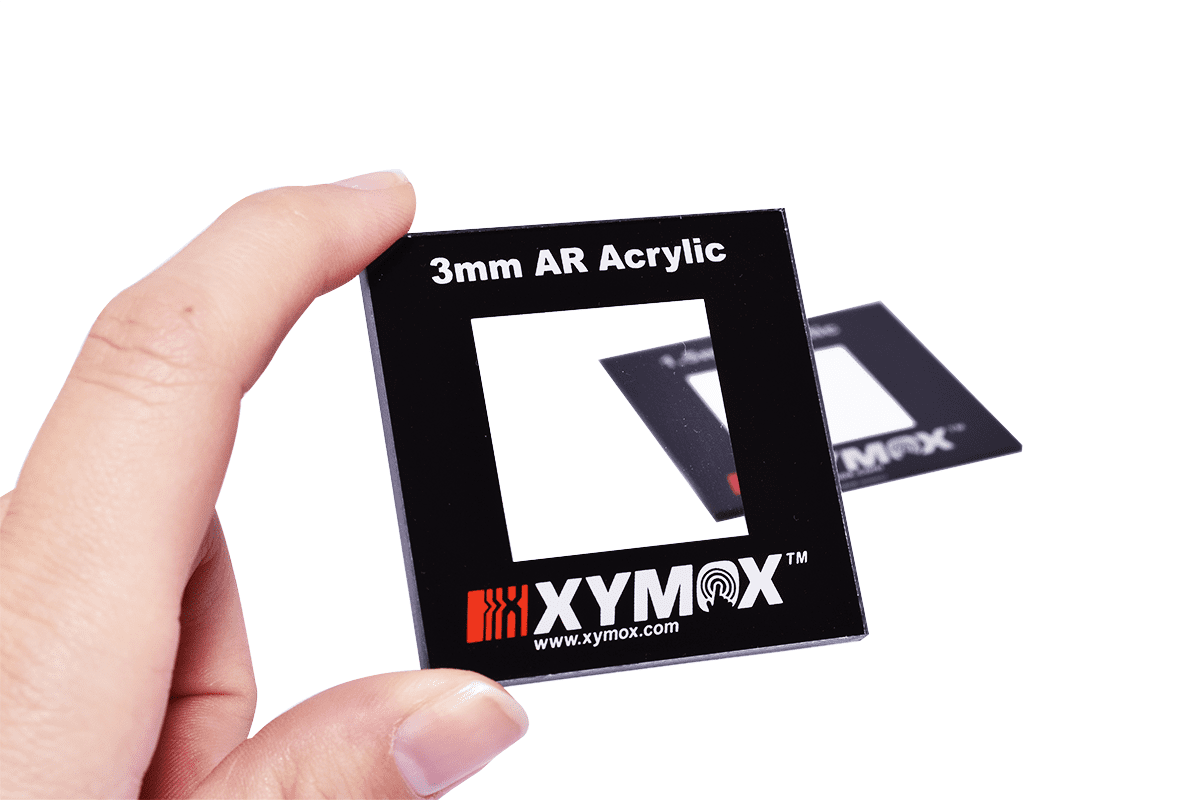Lenses can be made from many materials; the important part is to choose the material that meets your needs. Xymox works with many types of lens materials – supporting the application-specific solution that is just right for any touch sensor need.
Glass versus Polymer
Advantages of glass
- Extremely scratch resistant

- Feels great to the touch
- Generally no color cast from glass
- Can get anti-reflective coatings
Disadvantages of glass
- Modest impact resistance – can break
- Hard to decorate
- Expensive
- Heavy
Advantages of polymer
- Easier to decorate
- More cost effective
- Lighter than glass
- Many standard thicknesses
- Very impact resistant
- Easier to cut and shape than glass
Disadvantages of polymer
- Can have a color-cast
- Can yellow under harsh UV exposure
- More susceptible to scratching and abrasion than glass
Glass choices
- Soda-Lime glass
- The cheapest, standard glass
 Borosilicate glass
Borosilicate glass
- Low coefficient of thermal expansion, very stable
- Chemically strengthened glass
- Processing increases strength 6-8 times that of non-strengthened glass
Polymer choices
- Acrylic
- Scratch resistant
- Can be abrasion resistant coated to give improved properties
- Generally resistant to UV yellowing
- Polycarbonate
- Very high impact resistance
- Easy to decorate
- Can be hardcoated to improve scratch and abrasion resistance – without coating it’s relatively soft and easy to scratch
- Can yellow with UV exposure
There are great choices available for lens materials. Xymox puts touch sensors on all these materials for great application-specific touch screen interfaces. Get what you want and what fits your application best.


 Borosilicate glass
Borosilicate glass